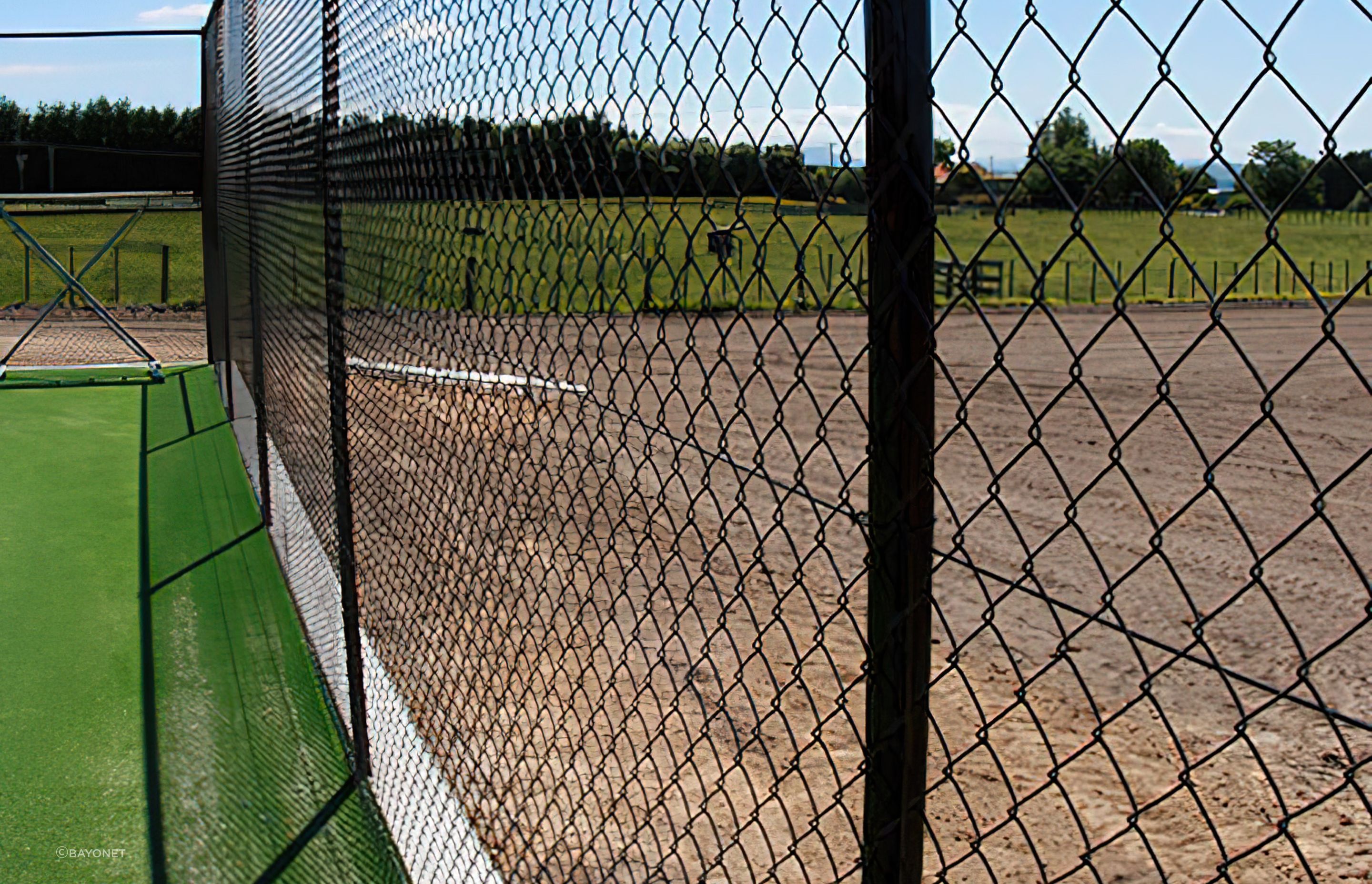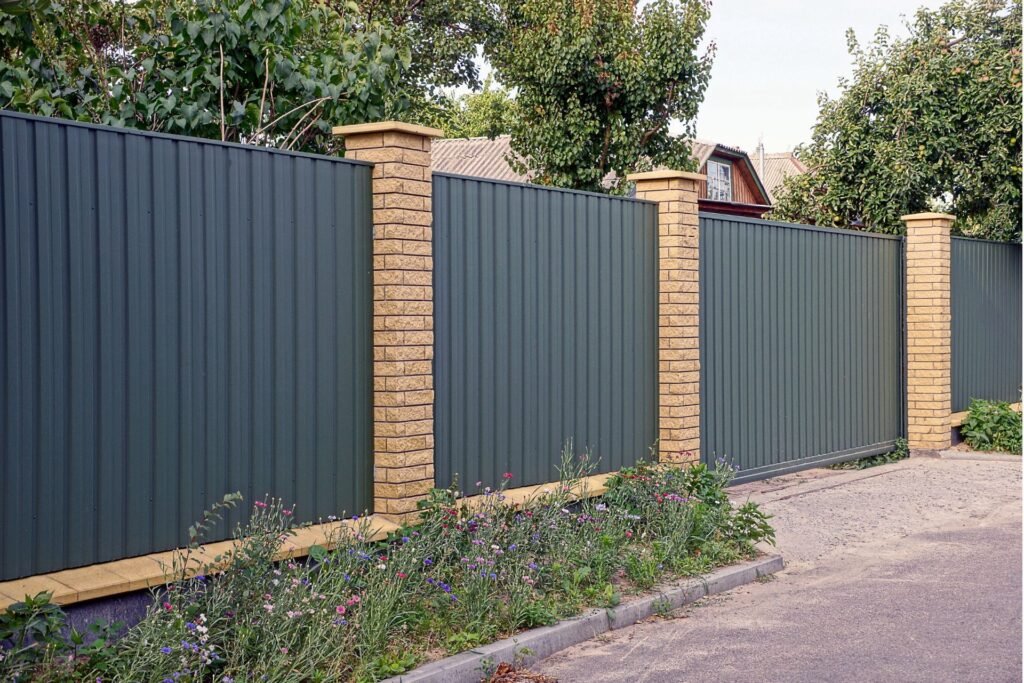The Best Materials Recommended by Top Fence Builders – Wood? Find Out Here
The Best Materials Recommended by Top Fence Builders – Wood? Find Out Here
Blog Article
A Comprehensive Guide to Fencing Install: What You Required to Find Out About Fence Services
When it comes to installing a fence, you have actually obtained a great deal to ponder. You'll require to assess your home and make a decision if you desire to deal with the installment on your own or hire an expert.
Understanding Different Sorts Of Fence Materials
When you're picking a fencing, understanding the different types of secure fencing products is necessary. Each material uses unique benefits and disadvantages, influencing your decision. Wood supplies a timeless appearance and can be customized, however it needs normal upkeep and may rot over time. Plastic is low-maintenance and long lasting, standing up to fading and pests, but it can be pricier upfront. Chain-link fence is cost-efficient and sensible for confining huge locations, though it does not have personal privacy and visual allure. Steel secure fencing, like functioned iron or aluminum, offers strength and sophistication however might need corrosion security. Compound products blend the very best of wood and plastic, providing longevity with a natural appearance. Consider your budget plan, desired looks, and maintenance preferences when examining these alternatives. Ultimately, selecting the ideal product will certainly assist you produce a fencing that satisfies your needs and improves your property's value.
Examining Your Home and Fence Demands
Prior to you start your fence installation, it's vital to assess your building borders and the objective of your fence. Recognizing neighborhood guidelines and permits will certainly additionally assist you stay clear of any lawful concerns down the line. By thinking about these variables, you'll ensure your fencing fulfills both your needs and area standards.
Property Limits and Lines
Recognizing your home borders is crucial for an effective fencing setup, as it not only aids you figure out where your fence will go yet additionally ensures you're respecting your next-door neighbors' space. Beginning by reviewing your property act or survey, which normally details the specific boundaries. You may additionally intend to seek advice from with a professional surveyor if you're unsure.
Keep in mind, neighborhood zoning legislations might determine fence positioning and height, so examine those regulations too. Taking these steps warranties your fencing is appropriately placed and certified, making the entire process smoother for you.
Function of Fencing
Fencing serves multiple purposes that can substantially boost your building. It offers protection by developing an obstacle that discourages intruders and safeguards your items. Second, it offers privacy, permitting you to enjoy your outside space without bothering with prying eyes. Third, fencing can define your property limits, making it clear where your area ends and your neighbor's starts. In addition, it can improve the aesthetic allure of your home, including personality and design while enhancing aesthetic charm. A well-placed fencing can help handle noise from nearby roads or next-door neighbors and even maintain pet dogs and children risk-free. By evaluating your certain needs, you can select the appropriate kind of fencing to attain these benefits properly.

Local Regulations and Permits
Just how can you assure your fence setup abides by local regulations? Beginning by consulting your regional zoning office or metropolitan web site. Fencing in South Auckland. They usually have standards regarding fence elevation, products, and placement. You'll additionally intend to discover if you need a license before starting your task. Some locations need permits for any new fence, while others may just require them for taller structures.
In addition, consider property lines and any type of easements on your land. Marking your borders can avoid disagreements with neighbors or prospective lawful issues. By understanding these guidelines ahead of time, you can prevent pricey mistakes and establish your fencing is developed to last, improving both your residential or commercial property's value and your tranquility of mind.
Local Rules and Permits for Fencing
Before you begin your fencing job, it is necessary to inspect regional regulations and acquire any kind of needed permits. Each city or county has its own guidelines relating to fencing height, materials, and positioning. These guidelines ensure that your fence abides by safety and security criteria and area appearances.
You may require to submit a fence plan, describing measurements and products. Some areas might also call for a study to confirm building borders.
Overlooking to adhere to these guidelines can cause fines or required removal of your fence, throwing away both time and cash. Take the time to research study and protect the appropriate licenses for a smooth installation process. This step is essential in seeing to it your project lines up with neighborhood regulations and community criteria.
Picking Between Do It Yourself Installment and Professional Services
Are you thinking about whether to take on the fencing installation yourself or work with a professional? If you're useful and have experience with similar jobs, DIY could conserve you money.
Mounting a fence takes time, and if you're handling a busy schedule, hiring an expert can ensure it gets done successfully. If your backyard has difficult surface or certain style requirements, experts bring competence that can make a difference.
Finally, variable in regional laws. A professional knows the licenses and codes needed, helping you stay clear of prospective fines. Ultimately, evaluate your skills, time, complexity, and guidelines to make the most effective choice for your secure fencing job.
Step-by-Step Guide to Fence Installation
As soon as you've decided to move on with your fencing installation, following an organized detailed strategy will ensure a smooth process. Start by marking the fencing line with stakes and string to picture the design. Next, check regional regulations to validate compliance with elevation and property lines.
Dig article openings at the very least two feet deep, spaced according to your fence type-- commonly 6 to 8 feet apart. Place the posts into the openings and load them with concrete for security. As soon as the blog posts are set, attach the horizontal rails or panels, making certain they're degree.
Safeguard the panels or pickets, confirming they straighten correctly. If you're using entrances, install them last, ensuring they turn easily. Ultimately, look for any kind of loosened links and make necessary modifications. Your fence must now prepare to boost your residential or commercial property and supply the privacy or safety and security you need!
Upkeep Tips for Longevity of Your Fence
To maintain your fence looking terrific and lasting much longer, normal maintenance is essential. You should establish a cleansing timetable, check for any kind of damage, and apply safety finishings as needed. By remaining aggressive with these tasks, you'll ensure your fencing remains tough and attractive for many years to find.
Routine Cleansing Set Up
While it could be simple to overlook, developing a routine cleansing schedule is important for preserving the longevity of your fence. Beginning by rinsing your fencing with water at least once every period to get rid of dirt and particles. For wooden fences, use a mild soap remedy and a soft brush to scrub away any type of mold or mold. Do not neglect to look for any rust on steel fencings; a cord brush can assist remove it, adhered to by a layer of rust-resistant paint. If you live in an area with Our site heavy pollen or dirt, you may intend to enhance your cleansing regularity. Maintaining your fence clean not just enhances its appearance however likewise extends its life, saving you cash over time.
Inspect for Damages
Frequently inspecting your fence for damage is vital if you want to preserve its stability and longevity. Begin by strolling around your fencing to look for noticeable indicators of wear, such as fractures, loosened boards, or rust. Inspect for any kind of signs of bugs, like termites or woodpeckers, that can endanger your fence's structure.
Apply Safety Coatings
After checking your fence for damages, applying protective finishings is a vital action in ensuring its long life - Fence Contractors. If your fencing is plastic or steel, consider a UV-protective spray or paint to stop fading and rust.
Make certain to clean the surface extensively prior to application, as dirt and grime can threaten the covering's performance. Apply the finish in completely dry climate for far better attachment, and do not neglect to comply with the supplier's instructions for the finest outcomes. Consistently reapply every couple of years to maintain your fencing looking wonderful and standing solid against the elements.
Expense Considerations and Budgeting for Your Fencing Project
When preparing your fence project, understanding cost factors to consider is vital to remaining within spending plan. Start by establishing the sort of product you want, as expenses can vary substantially in between wood, plastic, and steel. Do not forget to factor in labor costs-- working with experts may conserve you time however can enhance your general costs.
Next, determine your residential property to determine the direct video needed, as this directly effects product expenses. Additionally, consider any kind of licenses you could require, which can include in your spending plan.

Lastly, it's a great concept to establish apart a contingency fund for unexpected expenditures. By intending meticulously and considering these factors, you can produce a reasonable budget that fulfills your fencing needs without damaging the financial institution.
Frequently Asked Questions
Just how Long Does the Ordinary Fencing Setup Take?
The average fence installation typically takes one to three days, depending on the fence type and size of your backyard. You'll require to consider any kind of delays because of weather or permit needs too.
What Should I Do if My Fence Is Damaged?
If your useful reference fencing is damaged, initially evaluate the degree of the damages. Repair minor concerns on your own, however, for significant troubles, consider contacting a professional. Don't wait also long; it'll assist prevent even more problems.
Can I Mount a Fence on an Incline?
Yes, you can mount a fence on a slope. You'll require to change your installment method, either by stepping the panels down or using a racked style to guarantee security and correct positioning with the surface.
What Are the very best Practices for Fence Painting?
To paint your fence efficiently, start with correct cleaning and sanding. Usage top notch index paint and use in also strokes. Don't forget to pick the ideal weather for paint, guaranteeing it's dry and moderate.
How Often Should I Inspect My Fence?
You ought to inspect your fence a minimum of two times a year, concentrating on indications of damage, rot, or corrosion. Normal checks assist you catch problems early, guaranteeing your fencing remains sturdy and visually enticing longer.
Report this page